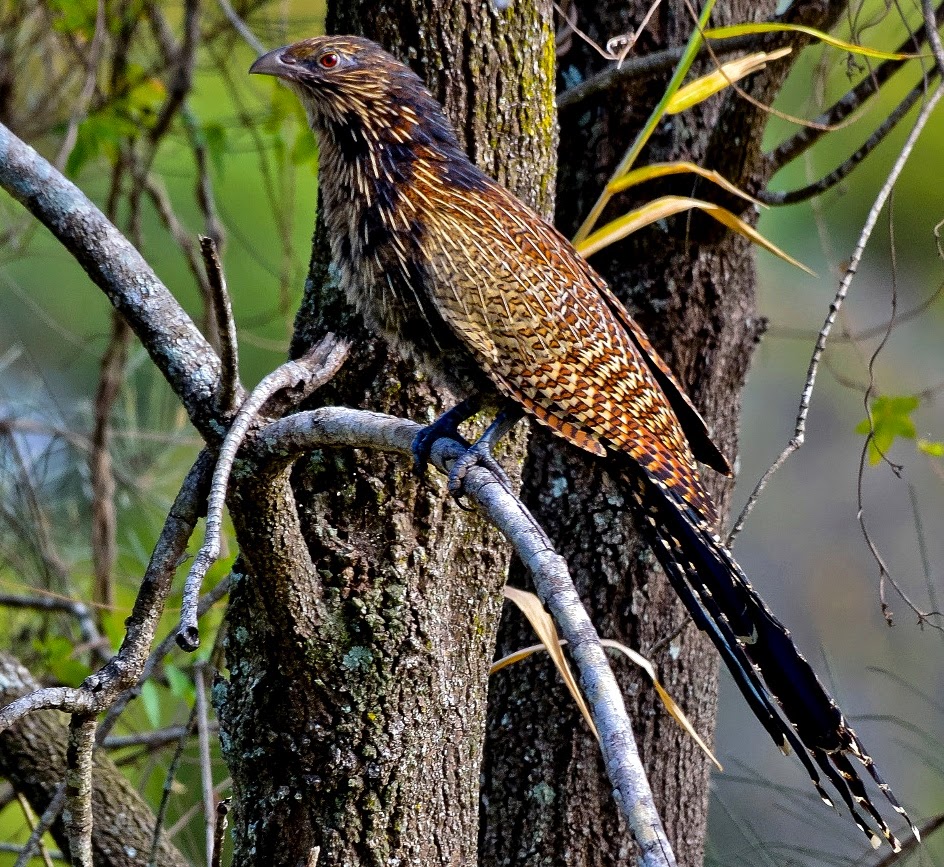 |
| Photo by James Niland (Flickr) |
Common name:
pheasant coucal (en); cucal-faisão (pt); coucal faisan (fr); cucal faisán (es); fasanspornkuckuck (de)
Taxonomy:
Order Cuculiformes
Family Cuculidae
Range:
This species is found in northern and eastern Australia, as far south as Sidney, and also in the lowlands of Papua New-Guinea and in the island of Timor both in Timor Leste and Indonesia.
Size:
These birds are 50-80 cm long and weigh 200-500 g.
Habitat:
The pheasant coucal is found in moist tropical forests, tropical scrublands, mangroves, riverine vegetation and the margins of swamps and marshes.
Diet:
They forage on the ground, taking large insects such as grasshoppers, stink bugs, mantids, stick insects and caterpillars, mus crabs, frogs, lizards, the eggs and young of other birds, and sometimes also small mammals.
Breeding:
Pheasant coucals breed in September-May. They are monogamous and form long lasting pairs. The nest is built mainly be the male and consists of bowl or a platform of sticks, grass or rushes, lined with leaves and grasses. It is placed among tall grasses or scrubs and the stems overhead are often tied together to make a canopy. The female lays 2-5 white eggs, which the male incubates alone for 15 days. The chicks are mainly fed by the male, but with some help from the female, and fledge about 13 days after hatching.
Conservation:
IUCN status – LC (Least Concern)
This species has a very large breeding range and is reported to be common near the coast, but rarer near arid areas. Trend justification: The population is suspected to be stable in the absence of evidence for any declines or substantial threats.







